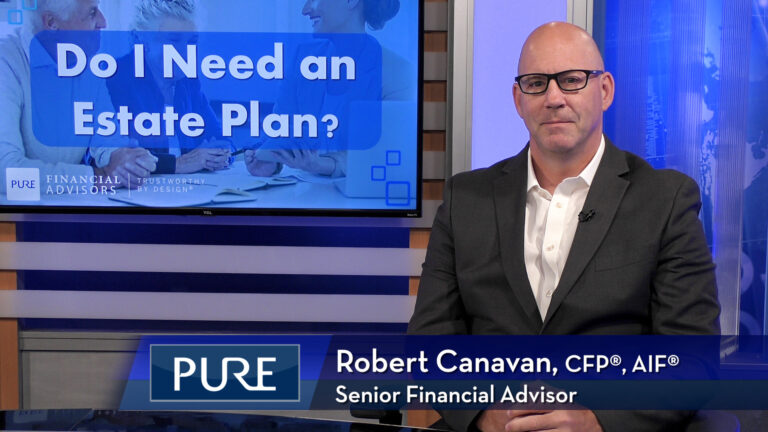Johnson Andrews, CFP®, AIF®, Financial Planner, Irvine, covers three tax saving strategies:
- Employer Match 401k plans: The Triple Bonus
- Charitable Giving: Donor Advised Fund & QCD’s
- Start Your Own Gig Business: Tons of Deductions.
FREE GUIDE | 2023 Tax Planning Guide
Transcript
1. Employer Match 401k Plans
In a traditional plan, when you contribute a percentage of your salary to a 401(k) plan, you immediately start paying less to Uncle Sam. That’s because your contribution comes out of your paycheck before income taxes are deducted so your taxable income is less, which in turn lowers your tax bill. But it’s a double bonus: you’re putting away pre-tax dollars into a retirement fund which puts that money to work. Then, when you’re no longer working and hopefully in a lower tax bracket, you pay the taxes then. But wait there’s more, it becomes a triple bonus if your employer has a match program and who doesn’t like free money?
In 2023, the contribution limit for employees who participate in 401(k), 403(b), most 457 plans, and the federal government’s Thrift Savings Plan (TSP) has increased to $22,500, up from $20,500. The catch-up contribution limit for employees aged 50 and over who participate in those plans has also increased to $7,500, up from $6,500, so they can contribute up to $30,000! The catch-up contribution limit for employees aged 50 and over who participate in SIMPLE plans is increased to $3,500, up from $3,000.
Now, there are similar benefits in IRAs. The limit on annual contributions to an IRA increased to $6,500, up from $6,000. The IRA catchup contribution limit for individuals aged 50 and over is not subject to an annual cost of living adjustment and remains at $1,000.
2. Charitable Giving
Charitable contributions are one of the best tax-saving opportunities available. Not only does the charity benefit, but taxpayers also enjoy tax savings by deducting part or all of their contributions on their tax returns. For cash contributions to public charities and operating foundations individual taxpayers can claim charitable contributions up to 60% of their adjusted gross income (AGI). Bunching charitable deductions in alternate tax years is a way to increase your itemized deductions since a high standard deduction makes it more difficult to itemize. Even better than cash contributions, gifting appreciated assets directly to charity or to a Donor Advised Fund. The value of the asset on the date of the donation is your charitable deduction and you will not be subject to any capital gains taxes. Consider setting up a Donor Advised Fund for the benefit of future charities of your choice. This is an account that’s generally set up at a brokerage company and is designated for charity in the future. The year of contribution is the year you receive a tax deduction. In later years, you decide which charities receive a benefit. If you’re over age 70 ½, you may contribute your distributions from your IRA directly to charity. This is a way to take a tax-free distribution even if you don’t itemize deductions. The annual limits for Qualified Charitable Distributions are now indexed to inflation, and you can make a one-time $50,000 charitable distribution via split interest gifts.
3. Start Your Own Gig Business
When deciding what structure will work best for your business, it’s important to consider the tax implications. Recent tax law changes should be considered as you examine your options. Regardless of your choice, you will be able to deduct ordinary and necessary expenses for your business against your income, and you may increase your retirement savings options. The write-offs are extensive from property rent to vehicle operation, health coverage to meals and entertainment. Want to take the plunge and start up a business this year? The IRS allows you to deduct the first $5,000 of those costs on your corporate taxes. Now that’s some incentive to get the ball rolling!
These are just three strategies to save on taxes, but I just scratched the surface. If you would like to find out how to take advantage of all that are out there, contact Pure Financial Advisors for a free tax analysis today.
Subscribe to our YouTube channel.
IMPORTANT DISCLOSURES:
• Investment Advisory and Financial Planning Services are offered through Pure Financial Advisors, LLC, a Registered Investment Advisor.
• Pure Financial Advisors LLC does not offer tax or legal advice. Consult with your tax advisor or attorney regarding specific situations.
• Opinions expressed are subject to change without notice and are not intended as investment advice or to predict future performance.
• Investing involves risk including the potential loss of principal. No investment strategy can guarantee a profit or protect against loss in periods of declining values.
• All information is believed to be from reliable sources; however, we make no representation as to its completeness or accuracy.
• Intended for educational purposes only and are not intended as individualized advice or a guarantee that you will achieve a desired result. Before implementing any strategies discussed you should consult your tax and financial advisors.
CFP® – The CERTIFIED FINANCIAL PLANNER™ certification is by the Certified Financial Planner Board of Standards, Inc. To attain the right to use the CFP® designation, an individual must satisfactorily fulfill education, experience and ethics requirements as well as pass a comprehensive exam. Thirty hours of continuing education is required every two years to maintain the designation.
AIF® – Accredited Investment Fiduciary designation is administered by the Center for Fiduciary Studies fi360. To receive the AIF Designation, an individual must meet prerequisite criteria, complete a training program, and pass a comprehensive examination. Six hours of continuing education is required annually to maintain the designation.














